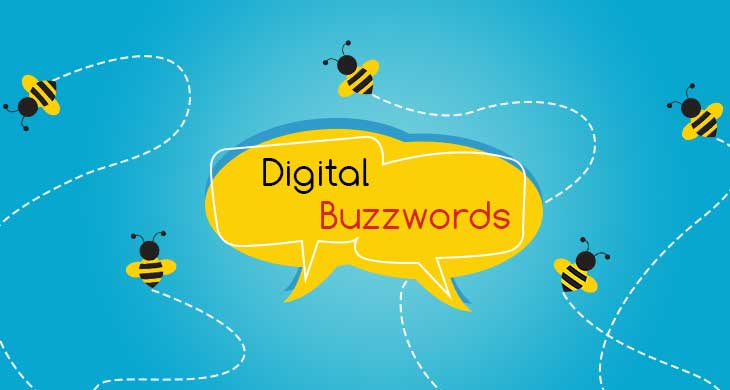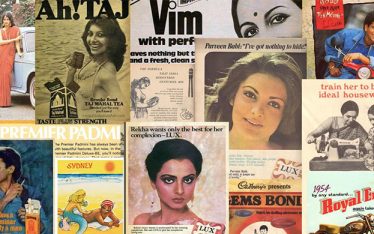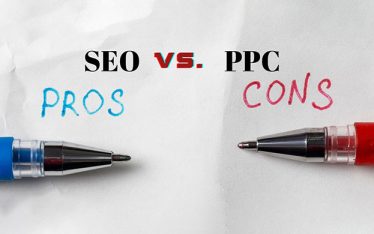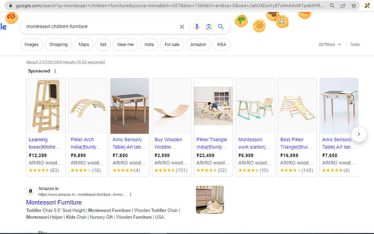108 Digital buzz words you should know when navigating with digital marketing agency Hiring a digital marketing agency to amplify or outsource your demand generation can be a daunting task. After all, you are entering a partnership to improve the ROI of your marketing efforts. Sometimes month after month you get lost in the technical jargons so much that you don’t know what and how digital marketing is helping you and are you even with the correct agency? We have listed out 108 keywords that you should read about and focus on when you are baffled in the digital world. 1) A/B testing: A/B testing, also known as split testing. It is a way of comparing two posts against each other to see which performs best. 2) Ads manager: Ads Manager is Facebook’s tool for creating, running and analyzing social ads. 3) Algorithm: In general, an algorithm is a defined set of rules used to solve a problem. 4) Analytics: Analytics basically a systematic computational analysis of data or statistics to check how a post/campaign is performing. 5) Application programming interface (API): An API is a set of building blocks that programmers can use to develop computer programs. 6) Application programming interface (API): An API is a set of building blocks that programmers can use to develop computer programs. 7) Audience: Your audience on social media is the group of people you can reach with your content. It also includes anyone who engages and views your content. 8) Avatar: Your social media avatar, also known as your profile picture, is a small image that represents you on a social network. 9) Average response time: It is the average time a company takes to reply to questions or complaints on social media. 10) Affiliate marketing: Affiliate marketing refers to selling other people’s products or services for a commission. 11) Aged domain: An aged domain name refers to a domain name that has expired. 12) Anchor text: Anchor text refers to the words that make up or form a link. 13) Business-to-business (B2B): A B2B business sells products or services to other businesses, like a consulting firm or a business software company. 14) Business-to-consumer (B2C): A B2C business deals directly with consumers, like a hotel or retail store. 15) Bio: Your social media bio is a short description of your profile that tells people who you are, what you do and how they can use the solution they are offering. 16)Boosted post: Also known as promoted posts, a boosted post is a Facebook post that you put money behind to reach out to a larger target audience. 17)Brand advocate: A brand advocate on social media is a customer who posts positive messages, leaves positive reviews, or otherwise supports your brand on social. 18)Brand awareness: Brand awareness is the level of familiarity and the extent to which consumers are familiar with the qualities or image of a brand of goods or services. 19)Business manager: Facebook Business Manager is a software that helps organizations manage their Pages, ad accounts, and team members. 20)Big data: Extremely large data sets that are analyzed computationally using various algorithms to reveal patterns, trends, and associations to optimize further. 21)Backlinks: Backlinks is an incoming hyperlink from one web page to another website. 22) Black hat SEO: Black hat SEO is a practice against search engine guidelines, used to get a site ranking higher in search results. A few examples of black hat SEO strategies include page swapping, invisible texts and keyword stuffing. 23) Bounce rate: It is a web traffic analysis that represents the percentage of visitors who visit a web page and then (leave) without viewing other pages within the same website. 24) Broken links: A broken link also known as dead link is a link on a webpage that does not work. 25) Chatbot: A chatbot is an artificial intelligence program that automates customer interactions for a company. Basic queries can be automated to avoid excess manual work. 26) Clickbait: Clickbait is content that uses manipulative copy to convince users to click on it. The main purpose is to attract attention and encourage visitors to click on a link to a web page. 27) Click-through rate (CTR): On social media, clickthrough rate is the percentage of people that see your post who click on it. CTR is equal to (link clicks / post impressions) x 100%. 28) Conversion rate (CVR): In social media terminology, the conversion rate is the percentage of users who see your post or ad who then take a specified action. conversion rate is the percentage 29) Cost per click (CPC): Cost per click is an advertising metric that tells you how much you’re paying for each click on your ad (on an average). 30) Cost per mille (CPM): Cost per Mille is another social advertising metric. It refers to how much you pay per 1,000 impressions. ‘Mille’ means 1,000 in Latin. 31) Canonical issue: A canonical issue occurs when you have two or more pages with the same content but URLs are deferent. The search engine will always consider that a duplicate 32) Click-through rate: Click-through rate (CTR) is the number of times a visitor clicks on a post divided by the number of visitors. 33) Cost-per-click (CPC) Cost per Click essentially is the cost for each click in Pay-per-click marketing (PPC) campaigns. 34) Competitive benchmarking: Measuring your performance online is very important and has been done ever since Google introduced its well-known tool, Google Analytics. Competitive benchmarking is the process of comparing your company against competitors using a set collection of metrics. 35) Content marketing: Content marketing is a form of marketing focused on creating, publishing, and distributing content for a targeted audience online to improve engagement and keep the users active and interested. 36) Crisis management: Social media crisis management is how you handle events or interactions that could potentially damage your company’s reputation. It is managing the reputation 37) Crowdsourcing: 38) Domain authority (MOZ): Domain Authority (DA) is a search engine ranking score developed by Moz that predicts how well a website will rank on search engine result pages (SERPs). 39) Duplicate content: Duplicate content refers to content that appears in more than one place on the internet. When a similar content is published in different sites, it becomes different 40) Dark post: A dark post is a social media ad that doesn’t appear on the advertiser’s timeline. 41) Dark social: Dark social is web traffic coming from social media that analytics tools struggle to track the source. 42) Direct message (DM): A direct message on social media is a private message sent directly to a user’s inbox. 43) Employee advocacy: Employee advocacy is when co-workers/employees at your company believe and promote your brand on social media. 44) Engagement: Engagement refers to any kind of activity performed by the users on a specific post or webpage. 45) Engagement rate: Engagement Rate = (number of people who engaged with your post / number of people who saw your post) x 100%. Tells you which post is motivating people 46) Evergreen content: In content marketing, evergreen content is content that ages well and maintains its value over time. Stays “fresh” for readers over a long period of time – as the name implies. 47) Ephemeral data: This data that is not stored; disappears after viewed. 48) Facebook Insights: Facebook’s version of page analysis, which allows a user to keep track of all the required metrics and information. 49) Facebook live: A live video streaming service by Facebook that allows you to directly communicate and interact with all followers/friends. 50) Feed: A feed on social media is a generic term for the stream of content you see from other users. 51) Follower: A follower is a user on social media who has subscribed to see your posts in their feed. 52) FOMO: FOMO is an acronym that stands for Fear of Missing Out. Social media marketers often use FOMO to their advantage by making exclusive or limited-time otters that users need to jump on quickly to avoid missing. 53) Frequency: Frequency is a Facebook/Instagram advertising term that refers to how many times your ad was shown to the average user in your target audience. 54) Google Adsense: Google Adsense is basically an advertising program that displays Google ads on websites. It is a simple way for web owners and publishers. 55) Google AdWords: 56) Google Analytics: Google analytics is a free online analytical tool that helps website owners to build effective sites and analyse traffic. 57) Geotargeting: Geotargeting is the technique of adjusting your ad content based on the location of a user. Customizing an advertisement for a product or service to a specific 58) Hashtag: Hashtag is a word or phrase preceded by a hash sign (#), used on social media websites and applications, especially Twitter, to identify messages on a specific topic. 59) Impressions: 60) Inbound links: An inbound link or backlink is a hyperlink on another webpage that leads to a webpage on your website. These links are important for SEO. 61) Influencer marketing: Influencer marketing focuses on using key leaders/influencers to drive your brand’s reach and engagement to a wider audience. 62) Key performance indicator (KPI): A Key Performance Indicator is a measurable value that demonstrates how effectively a company is achieving key business objectives. 63) Keyword density: Keyword density is the number of times a keyword is used on a web page compared to the total number of keywords contained in that web page. 64) Keyword research: Keyword research is a technique used by SEO experts to research and decide the best suitable keywords to be included. 65) Keyword stuffing: Keyword stuffing is a technique used by SEO experts to insert many keyword phrases into a webpage to increase the page’s ranking in search results. 66) Keywords and key phrases: Keywords and key phrases are a word or concept of great significance placed on a website to boost ratings in the search engines. 67) Listicle: A listicle is a list-based article. This type of content is often popular on social media because of its quick, easy-to-digest format. 68) Link juice: Link juice refers to the number of hyperlinks that point to a webpage. 69) Meta tag description: A meta tag description is an extract of HTML code in a page header that shows a summary of the content that is on that page. 70) Meta keywords tag: Meta keywords tags are a part of Meta descriptions which help in improving search engine ranking. 71) Meta tags: 72) Mobile friendly website: A mobile friendly website is a website that displays appropriately on mobile devices. 73) Meme: An image, video, piece of text, etc., typically humorous that is copied and spread rapidly by Internet users, often with slight variations. 74) Metric: A social media metric is that measures the performance of your posts, ads, or overall account. 75) Native advertising: Native ads are often found in social media feeds, or as recommended content on a web page. Unlike display ads or banner ads, native ads don’t look like ads. 76) News jacking: The practice of taking advantage of current events or news stories in such a way as to promote or advertise one’s product or brand. 77) Negative SEO: A negative SEO refers to the use of certain dishonest/scam tactics to attack the website of competitors on search engines. 78) No follow backlinks: No follow backlinks as the name suggests are backlinks that prevent Google bots from following the link from one page to another. This means that Google 79) Objectives: Objectives are the results you want to achieve through your ad campaign. 80) Organic search: 81) Pay-per-click (PPC): PPC is a social media marketing term for an ad model where you pay each time a user clicks on your ad. 82) Platform: The term social platform is often used to mean the same thing as “social network” or “social channel”. 83) Page authority (MOZ): Page authority is a scale developed and set by MOZ that shows how a page will rank on Google search results. 84) Page rank: Page rank is a technique used by search engines like Google search to determine the rank of a webpage. Evaluates the quality and quantity of links to a webpage to determine a relative score of that page’s importance and authority on a 0 to 10 scale. 85) Page titles: 86) Reach: Reach is a social media metric that measures how many people have seen your post. 87) Relevance score: Relevance score is a metric available in Facebook Ads Manager that tells you how well your target audience is responding to your ad on a scale of 1 to 10. 88) Retargeting: In social media advertising, retargeting is the technique of targeting ads at users who have interacted with your page or website before. 89) Reciprocal link: A Reciprocal link is the process of linking to other websites and allowing those websites to link back to your website. 90) Robots.txt: Robots.txt is just a text file web owners place on their websites to tell search bots which pages they need to visit to index certain directories or files within their sites. 91) ROI: Return on investment in social media can be any desired outcome from the time or financial resources that you have invested in social media activities. It is 92) SEM: SEM stands for Search Engine Marketing that involves the marketing of web sites to improve the overall reach and rank of the webpage/website. 93) SEO: Search Engine Optimization is better known as SEO is the process of optimizing webpages to improve the overall rank and reach. 94) SERPs: SERPs – Search Engine Results Page. It is the listing of results you get after entering a keyword into the search engine. 95) Site speed: Site speed refers to the load speed of a website or web page. 96) Social signals: Google also relies on social networking sites to rank websites. Search engines normally look at the number of likes, comments and shares before ranking web 97) Spider/Google/Crawler: A search engine spider, also known as a web crawler, is an Internet bot that crawls websites and stores information for the search engine to index. 98) Sentiment analysis: On social media, sentiment analysis tools can be used to automatically detect whether customer feedback is positive, negative, or neutral. 99) Shareable content: Shareable content is the content that’s likely to get users to share it with their 100) Social listening: Social listening is the process of monitoring digital conversations to understand what customers are saying about a brand and industry online. 101) Social media ROI: Social media ROI is the return on investment a company can expect to make from the time, money and effort the company spends on social media marketing. 102) Social selling: Social selling, put simply, is using social media to make sales. Social selling is the process of developing relationships as part of the sales process. 103) Targeting: Targeting is a social media advertising term that refers to the process of selecting your potential target audience for your ads. 104) Traffic: Traffic is the number of users who visit a given website page or SM page. 105) Trending topic: A trending topic is a subject or event that has a sudden surge in popularity on social media. 106) User generated content (UGC): User generated content, or UGC, is fan-created content promoting a brand. User-generated content, alternatively known as user-created content, is any form of content, such as images, videos, text and audio, that have been posted by users on online platforms. 107) Vanity metric: Vanity metrics are things like registered users, downloads, and raw pageviews. They are easily manipulated and do not necessarily correlate to the numbers that matter. 108) Viral: Viral is a term describing content that spreads exponentially on social media. We understand it is duper hard to remember all this at one go so share it on your social handle and save for future reference! We Believe We Grow When You Grow!Digital Marketing Buzzwords
of visitors to your website that complete a desired goal (a conversion) out of the total number of visitors. A high conversion rate is indicative of successful marketing.
page and may act the ranking.
of a brand/company by managing crises.
Crowdsourcing is using collective intelligence gathered from the public and using that information to complete business-related tasks. Uses a large group of people to generate ideas, services, or content via a social network.
cult for search engines to decide which version should come first in the search engine results.
to interact.
Google’s advertising system in which advertisers bid on certain keywords for their clickable ads to appear in Google’s search results.
market based on the geographic location of potential buyers.
Impressions are a social media metric that measures how many times your post has been shown in users’ feeds. They are the number of times a post from your
page is displayed.
A meta tag is a coding statement in the HTLM that summarizes the entire content of a web page.
does not transfer PageRank or anchor text across these links.
Organic search is a form of search engine optimization that is focused on improving the traffic towards your web site without paid ads.
A page title is the as the name suggests is the title or name of a website or webpage.
calculated by the following formula: ROI = (return – investment) / investment
pages.
networks.
Digital Marketing Buzzwords



